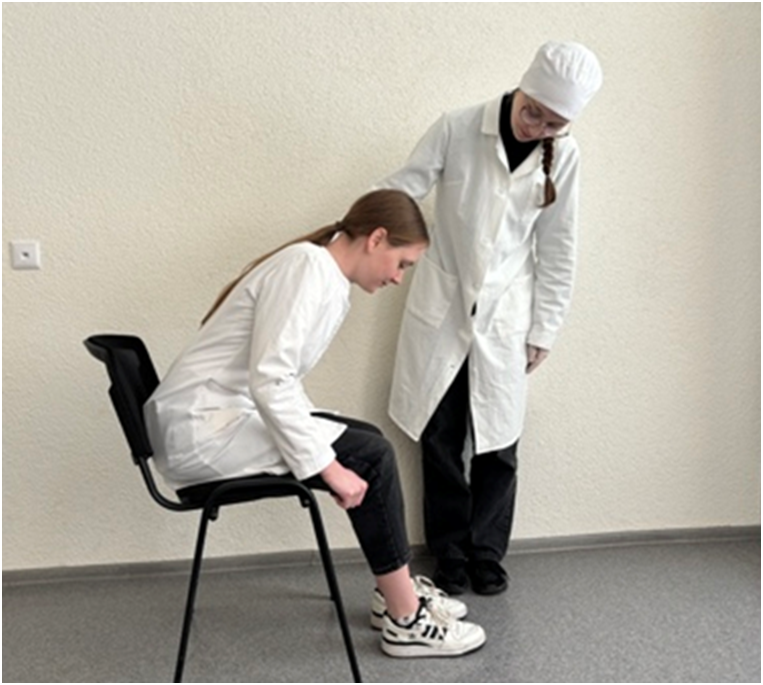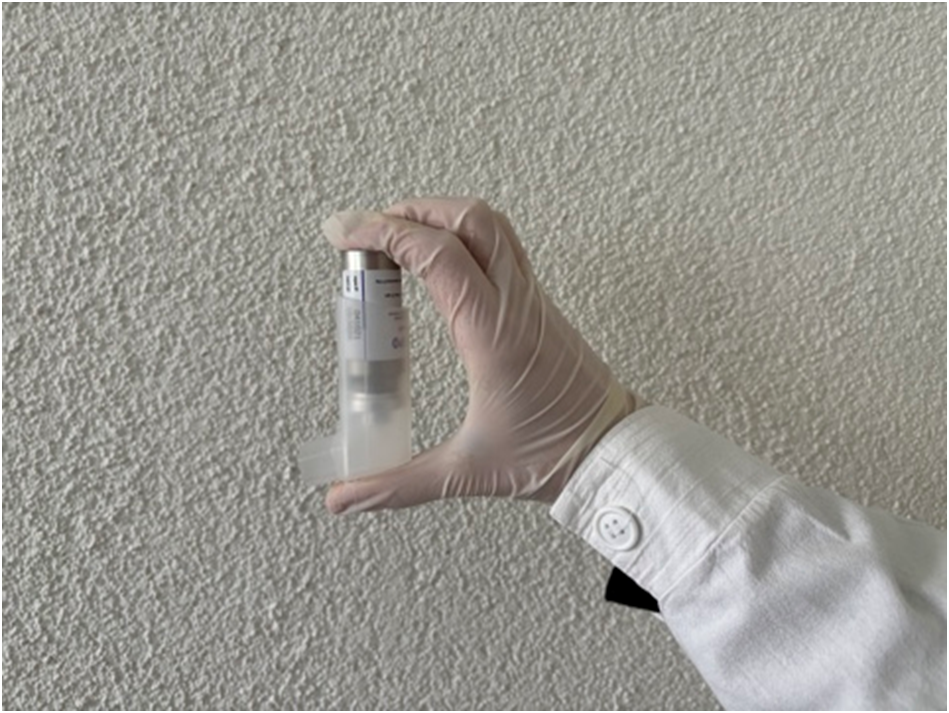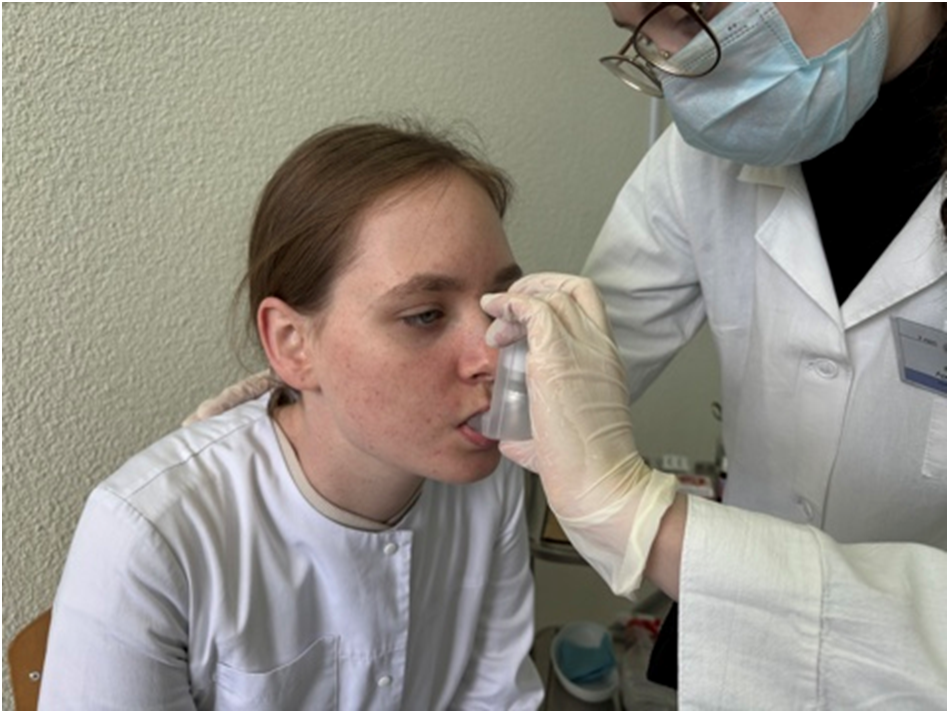First aid for an asthma attack
Требуемые условия завершения
Authors: Simulation and Certification Center
Editor: Rednenko V.V.
Clinical situation:
Your elderly relative complained of feeling unwell. When questioning him, you found out that he had complaints of difficulty breathing and severe weakness. You also pay attention to wheezing when exhaling and difficulty speaking. According to the patient, he has been suffering from bronchial asthma for 20 years. An hour ago, an asthma attack suddenly began. The patient has a bronchodilator inhaler. Provide first aid.
Equipment for the practical skill:
- simulated patient;
- metered dose inhaler (MDI).
- Keep calm and reassure the casualty.
- Help the casualty into a comfortable position – an arm bracing position (leaning forward with arms braced and leaning on a support).

- Loosen any tight clothing.
- Help the casualty to use his metered dose inhaler:
- Shake the container and then remove the cap.
- Hold the inhaler upside down, placing your middle or index finger on the bottom of the can and your thumb on the opposite side:

- Tell the casualty to breathe out completely.
- Tell the casualty take the mouthpiece of the MDI in the mouth.

- Tell the casualty to breathe in slowly and deeply – as the casualty does, the MDI will be pressed to release the medication.
- Tell the casualty to hold his breath for 10 seconds so the medication can spread out in the lungs.
- Then tell him to breathe normally, so the medication won’t be expelled.
- A mild attack should ease in a few minutes. If it does not, ask the casualty to take another dose from her inhaler.
- If more doses are needed, wait at least 30-60 seconds before repeating these steps.
- Access EMS immediately if:
- the person has no inhaler and the attack lasts for several minutes;
- the inhaler is ineffective within a few minutes;
- the person is experiencing severe breathing difficulties;
- the person’s lips, ears, fingers or toes turn a bluish color;
- the person has a change in mental status, such as becoming confused or unresponsive.
- Reassure the person and monitor vital signs – breathing, pulse, and level of response – while waiting for help to arrive.
Последнее изменение: пятница, 20 июня 2025, 12:34